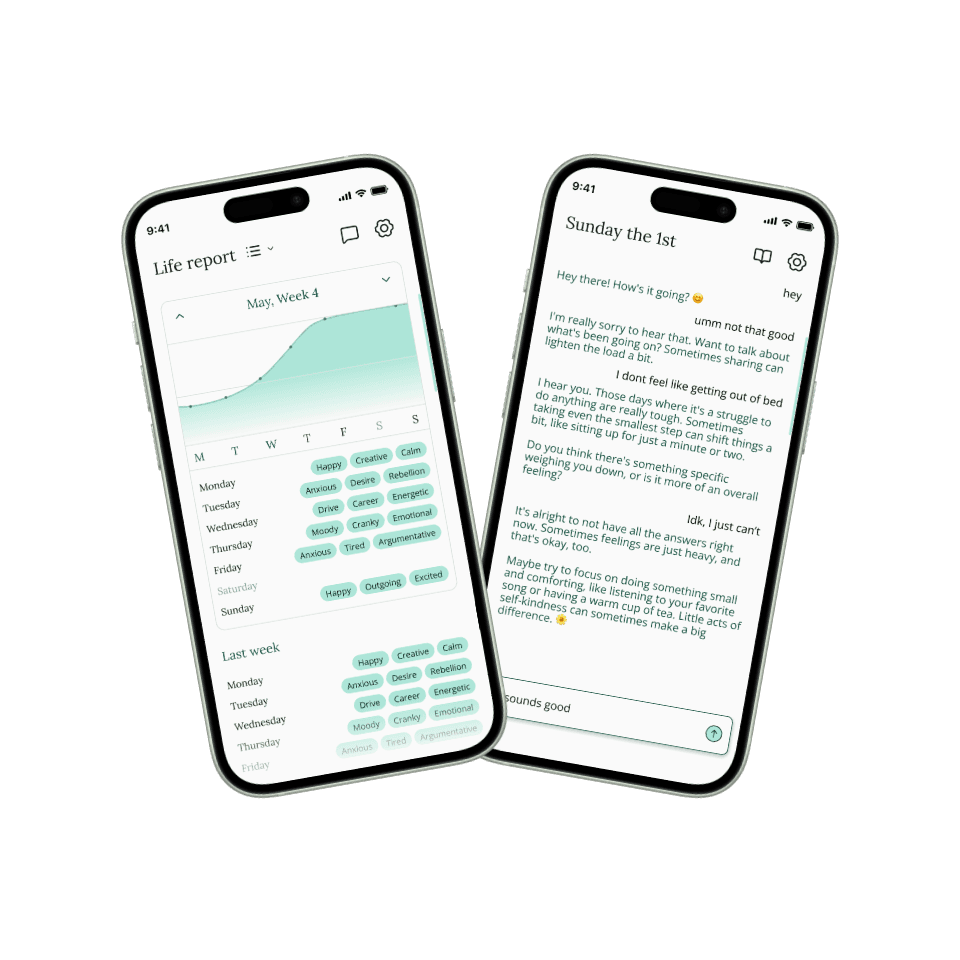
How to express difficult emotions in therapy
How to express difficult emotions in therapy
Jun 12, 2024
Jun 12, 2024
Therapy provides a unique space to process and give voice to the full depth of our emotional experiences - including the most painful, uncomfortable or difficult-to-express feelings. However, leaning into this degree of vulnerability and authenticity is often easier said than done.
We may have grown accustomed to suppressing, distracting from, or intellectualizing certain emotions that feel too overwhelming, shameful, or challenging to fully feel and articulate. Yet an integral part of the therapeutic process involves developing the courage to unflinchingly face and speak these very places within us.
Here are some tips for building your capacity to express difficult emotions during your therapy sessions:
Name and allow the feeling
One of the first steps is simply improving your emotional vocabulary and granularity. The more specific you can be about the flavor of emotion, the more powerfully you convey the nuances of your experience. Go beyond obvious feelings like "sad," "happy," or "anxious." Use nuanced descriptors like demoralized, elated, apprehensive, etc.
Use metaphor and imagery
Sometimes our emotions transcend the limits of language. That's when more poetic devices like imagery, metaphor or analogy can be illuminating. Perhaps you describe a painful feeling as "an anvil on my chest" or a certain anxiety as "strings insistently tugging me in divergent directions."
Include the sensations
Remember that emotions are not just mental events, but have vivid felt resonances in the body. Describe any physical sensations connected to what you're feeling. Do certain emotions make your muscles tense, breath constrict, or stomach churn? Adding the corporeal dimension makes it more tangible.
Don't censor the intensity
There can be a self-protective urge to want to abbreviate or soften the extent of our emotions, especially very painful or uncomfortable ones. Fight this tendency - give your feelings their fully embodied truth and magnitude in how you depict them. Your therapist can only meet you with attunement when you express your whole, uncensored experience.
Share the context and backstory
Emotions are invariably woven from our personal stories, memories, and underlying cognitive patterns. Provide your therapist with the relational, situational, and historical context in which these inner experiences arise. This enriched perspective allows them to understand the roots and symbolic resonances. You can prepare some notes before the session or use Verba to recall past events that add context.
Commit to vulnerability
At the end of the day, emoting authentically requires leaning into emotional vulnerability. This can trigger feelings of shame, fear or even repression. Voice your hesitancies about going to those vulnerable depths, and trust that your therapist can create the necessary safety and spaciousness for you to be unconstrained in bringing your emotional truth into the room.
Therapy provides a unique space to process and give voice to the full depth of our emotional experiences - including the most painful, uncomfortable or difficult-to-express feelings. However, leaning into this degree of vulnerability and authenticity is often easier said than done.
We may have grown accustomed to suppressing, distracting from, or intellectualizing certain emotions that feel too overwhelming, shameful, or challenging to fully feel and articulate. Yet an integral part of the therapeutic process involves developing the courage to unflinchingly face and speak these very places within us.
Here are some tips for building your capacity to express difficult emotions during your therapy sessions:
Name and allow the feeling
One of the first steps is simply improving your emotional vocabulary and granularity. The more specific you can be about the flavor of emotion, the more powerfully you convey the nuances of your experience. Go beyond obvious feelings like "sad," "happy," or "anxious." Use nuanced descriptors like demoralized, elated, apprehensive, etc.
Use metaphor and imagery
Sometimes our emotions transcend the limits of language. That's when more poetic devices like imagery, metaphor or analogy can be illuminating. Perhaps you describe a painful feeling as "an anvil on my chest" or a certain anxiety as "strings insistently tugging me in divergent directions."
Include the sensations
Remember that emotions are not just mental events, but have vivid felt resonances in the body. Describe any physical sensations connected to what you're feeling. Do certain emotions make your muscles tense, breath constrict, or stomach churn? Adding the corporeal dimension makes it more tangible.
Don't censor the intensity
There can be a self-protective urge to want to abbreviate or soften the extent of our emotions, especially very painful or uncomfortable ones. Fight this tendency - give your feelings their fully embodied truth and magnitude in how you depict them. Your therapist can only meet you with attunement when you express your whole, uncensored experience.
Share the context and backstory
Emotions are invariably woven from our personal stories, memories, and underlying cognitive patterns. Provide your therapist with the relational, situational, and historical context in which these inner experiences arise. This enriched perspective allows them to understand the roots and symbolic resonances. You can prepare some notes before the session or use Verba to recall past events that add context.
Commit to vulnerability
At the end of the day, emoting authentically requires leaning into emotional vulnerability. This can trigger feelings of shame, fear or even repression. Voice your hesitancies about going to those vulnerable depths, and trust that your therapist can create the necessary safety and spaciousness for you to be unconstrained in bringing your emotional truth into the room.
View more insightful blog articles
Today's tune



Track your mental health and get support between sessions with Verba
Learn more

Track your mental health and get support between sessions with Verba
Learn more

Track your mental health and get support between sessions with Verba
Learn more

Advait Naik
Advait is the founder of Verba and works at the intersection of psychology, design and technology to create a product that can help humans be more self aware through clarity